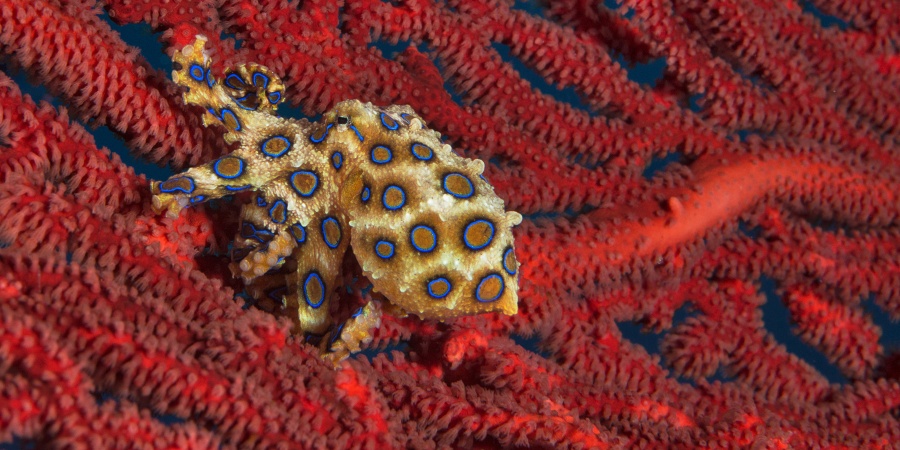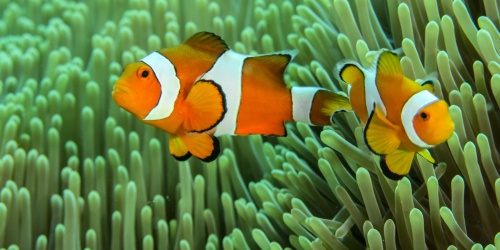
Blue-ringed octopus - Photo the Ocean Agency / Adobe
What is a blue-ringed octopus? The name octopus comes from the word Octopoda, which means ‘eight-footed’. All octopuses have eight arms. They are molluscs and, along with their close relatives the squid and cuttlefish, are the most highly developed invertebrates (animals without backbones), with a well developed brain and eye structure. There are several species of blue-ringed octopuses living around the WA coast including the southern blue-ringed octopus (Hapalochlaena maculosa).
What do they look like? These animals are rarely more than 12 centimetres long. They are normally well camouflaged, with yellow, brown and grey bodies. There are dark brown blotches and bands on the arms.
Where do they live? Blue-ringed octopuses live in reef flats and tidal pools, where they may inhabit dead shells. They secrete themselves in rocks and other debris and in crevices, so be extremely cautious when handling dead shells or discarded cans and bottles and when turning over rocks in the shallows. Always wear gloves when diving or snorkelling. Blue-ringed octopuses are found in all WA marine parks but are hardly ever seen because they are so skilled at hiding and camouflage.
What they eat and how: They feed mostly at night, on fish and crustaceans. Blue-ringed octopuses kill their prey with a potent toxin injected with their bite.
Threats: There are no known threats to blue-ringed octopuses.
Behaviour: These remarkable and spectacular creatures deliver a warning before they bite. When irritated or disturbed they rapidly develop brilliant blue rings. In such cases, you should admire their extremely colourful appearance from a safe distance. They are extremely venomous and, although such cases are rare, can cause human death.
Breeding and caring for young: The female lays eggs and carries them under her arms for about six months until they hatch. Once this happens the female dies.
Conservation status: Blue-ringed octopuses are common, although not frequently seen.
Treatment: The bite does not cause pain and puncture marks may not be visible. Numbness will be experienced, and it may become difficult to speak or see. If you are unlucky enough to be bitten, you should keep the injured limb still, put direct pressure on the wound and seek urgent medical aid.



























